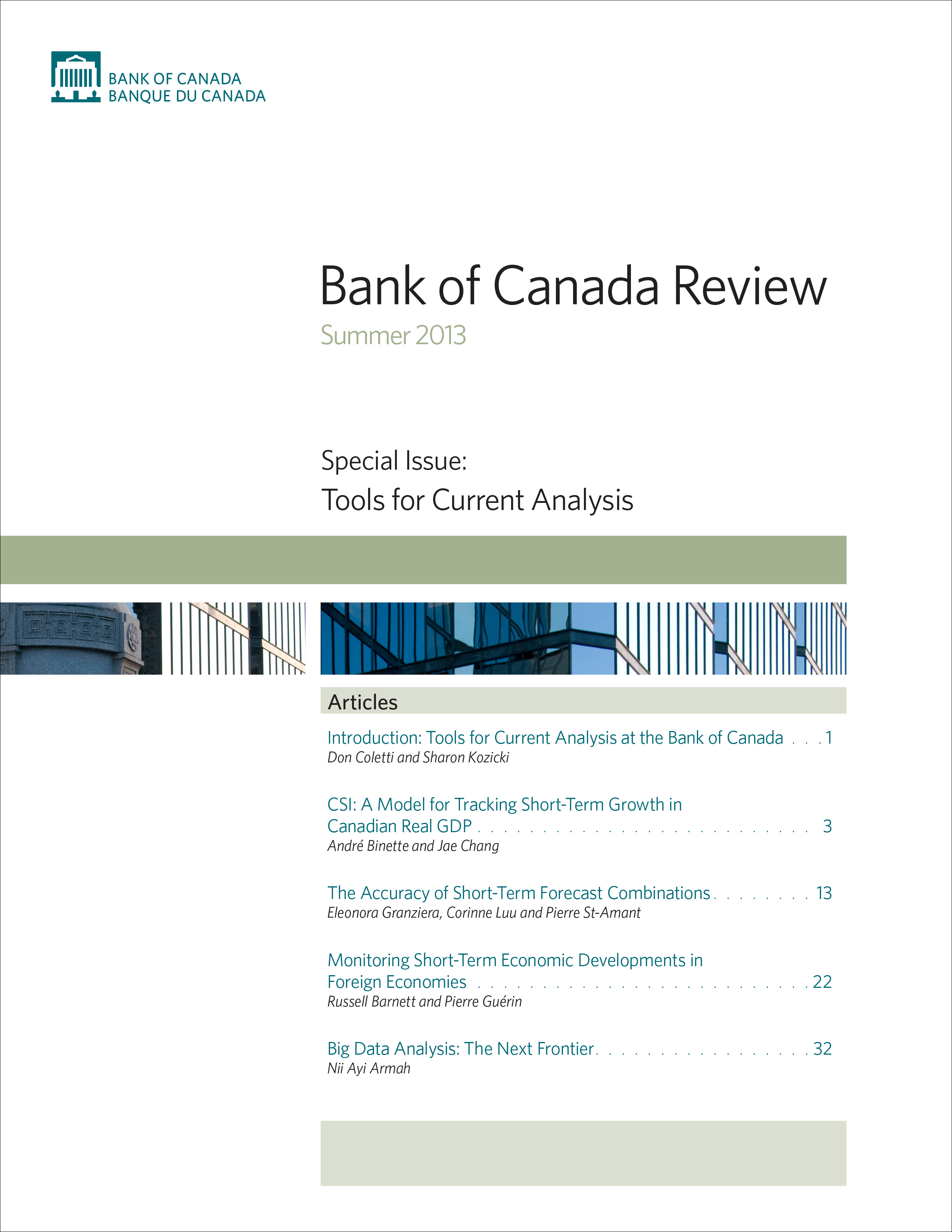Bank of Canada Review - Summer 2013
Available as:
PDF
This special issue discusses tools used at Bank of Canada to conduct current analysis - the collection and analysis of a broad spectrum of information to form a view of current economic activity. This analysis is a key input into the Bank’s monetary policy decision-making process.
The Bank of Canada Review is published four times a year. Articles undergo a thorough review process. The views expressed in the articles are those of the authors and do not necessarily reflect the views of the Bank.
The contents of the Review may be reproduced or quoted, provided that the publication, with its date, is specifically cited as the source.
